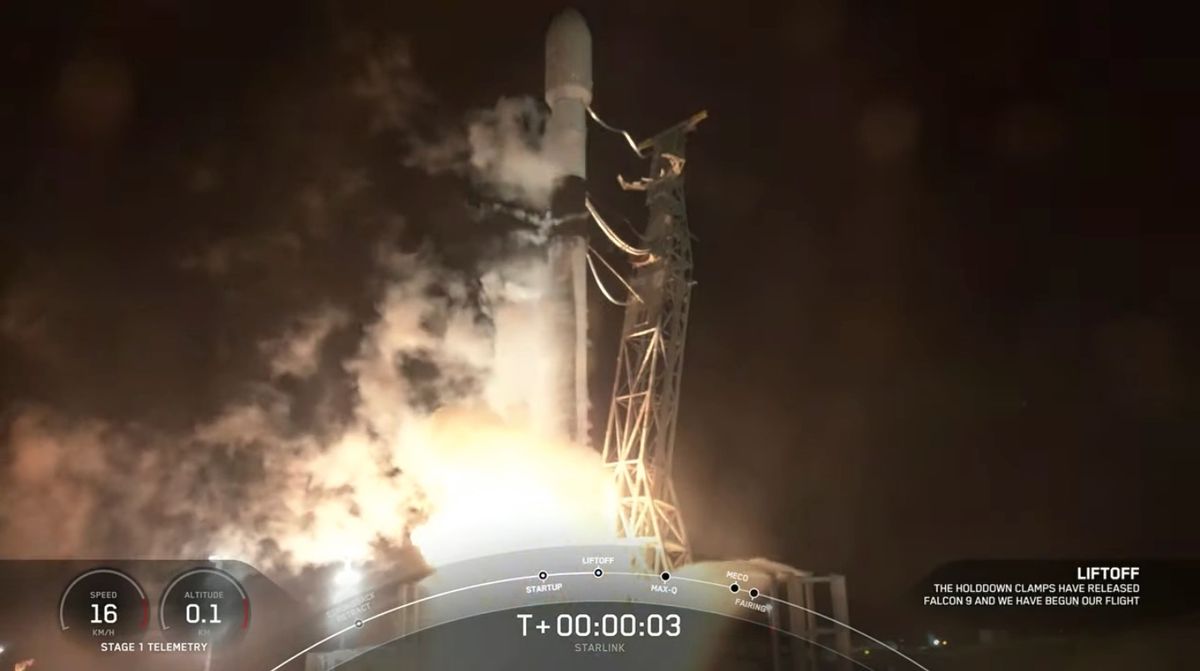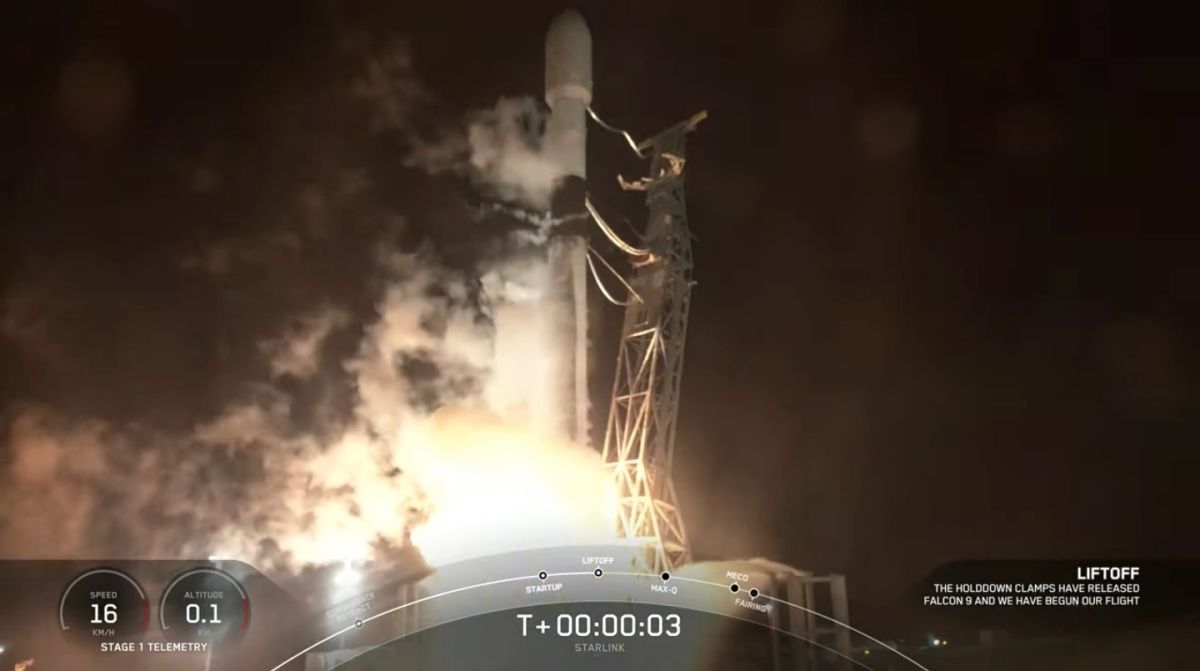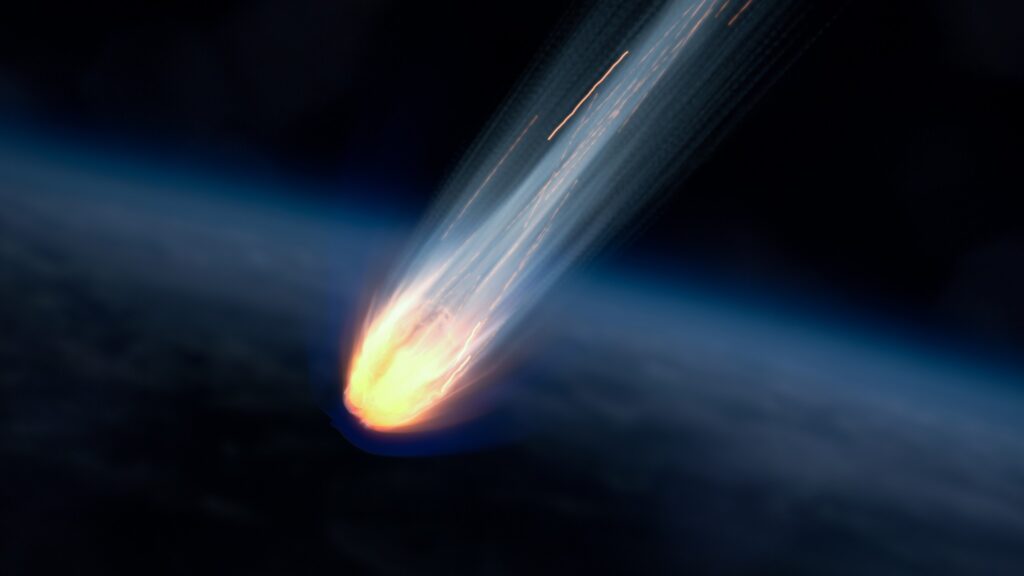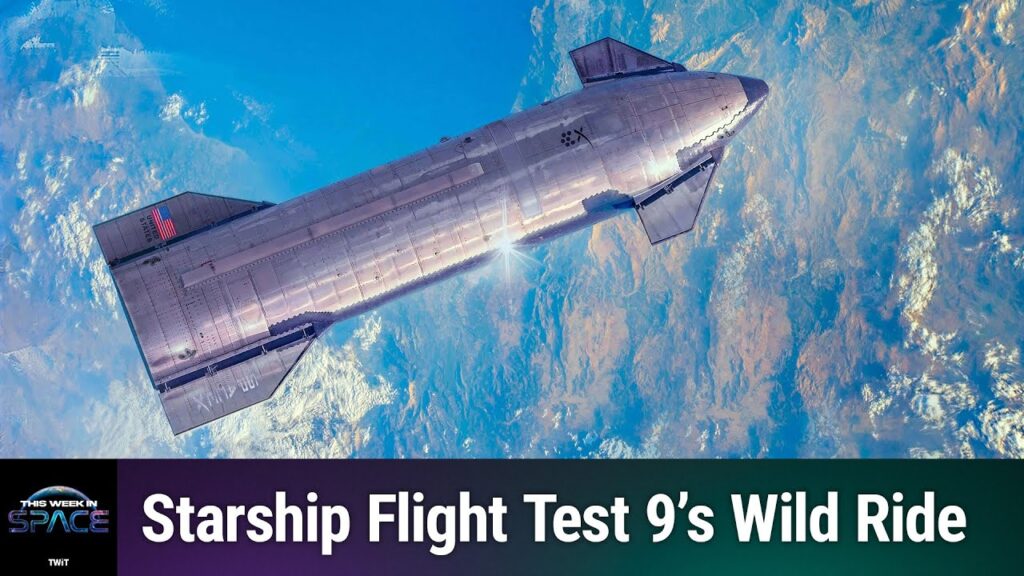
Another day, another Starlink launch.
A SpaceX Falcon 9 rocket lifted off from Vandenberg Space Force Base in California on Wednesday (Aug. 31) at 1:40 a.m. EDT (0540 GMT; 10:40 p.m. local California time), carrying 46 of the company’s Starlink internet satellites to orbit.
About 8.5 minutes after liftoff, the two-stage Falcon 9‘s first stage came down for a pinpoint landing on the SpaceX robotic droneship Of Course I Still Love You, which was stationed in the Pacific Ocean.
Related: SpaceX’s Starlink megaconstellation launches in photos
It was the seventh launch and landing for this Falcon 9 first stage, SpaceX wrote in a mission description (opens in new tab).
The rocket’s upper stage continued flying to low Earth orbit. It will deploy the 46 Starlink satellites a little over an hour after launch, if all goes according to plan.
SpaceX has already launched more than 3,000 satellites for Starlink, a giant internet constellation that beams broadband service to customers around the world. Many of those spacecraft have gone up this year; so far in 2022, SpaceX has launched 25 dedicated Starlink missions.
Starlink makes up a majority of SpaceX launch traffic these days; the company has now conducted a total of 39 orbital missions this year to date.
Related stories:
The megaconstellation will continue to grow, in both numbers and ambition. SpaceX has permission to launch 12,000 Starlink satellites, and it has applied for approval from an international regulator to loft another 30,000 on top of that.
And last week, SpaceX founder and CEO Elon Musk announced plans to beam connectivity directly to smartphones using Starlink. That project, a joint effort between SpaceX and T-Mobile called Coverage Above and Beyond, will employ Starlink Version 2 satellites, a heftier and more capable spacecraft that’s expected to start launching next year.
Mike Wall is the author of “Out There (opens in new tab)” (Grand Central Publishing, 2018; illustrated by Karl Tate), a book about the search for alien life. Follow him on Twitter @michaeldwall (opens in new tab). Follow us on Twitter @Spacedotcom (opens in new tab) or on Facebook (opens in new tab).



